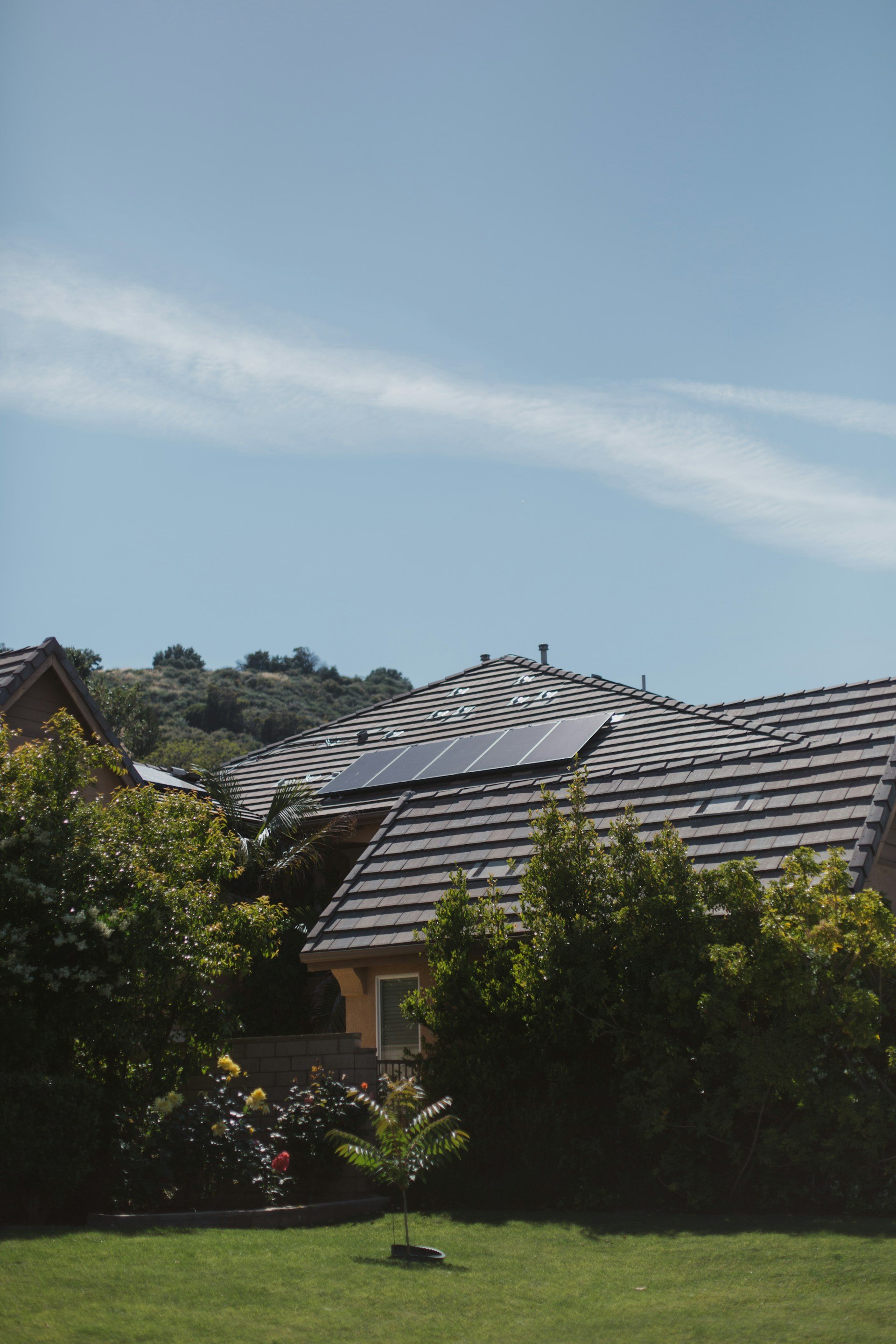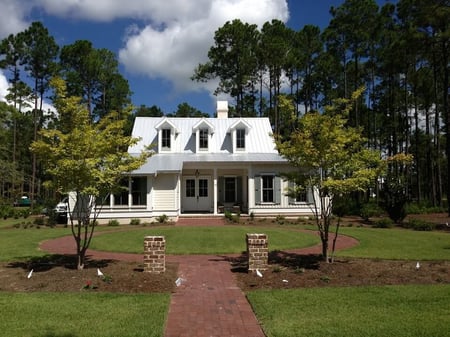5 Cutting-Edge Strategies to Improve Your Home's Energy Efficiency
May , 2024 | 11 min. read
By Joe Martinez

As climate change continues to be a pressing global concern, enhancing the energy efficiency of homes has become more important than ever. One of the most impactful areas for improvement is, drum roll please, your roof! Surprising, right?
It’s one of those areas of our homes that we don’t tend to think about every day, especially when it comes to energy efficiency. Here at RoofCrafters, we’re delighted to clue you in on a little secret! By making your roof more energy-efficient, you can significantly reduce your energy bills, increase your home’s comfort, and contribute to environmental sustainability.
So, how exactly does one, how do you say, make their roof more energy efficient? I’m glad you asked, my friend! In this article, we’re diving into 5 ways you can improve your home's energy efficiency through different roof types and applications, as well as how they work, their benefits, and things to consider. Let’s get started, shall we?
Cool Roof Technology

Cool roofs are designed to reflect more sunlight and absorb less heat than standard roofs. This is achieved through the use of reflective materials and coatings that enhance the roof's albedo, or reflectivity.
How It Works:
Cool roofs can be made from a variety of materials, including reflective paint, sheet coverings, or reflective tiles and shingles. The key is the special coatings and reflective granules that bounce sunlight away rather than absorbing it. These materials are engineered to stay cool even under direct sunlight, which keeps the overall temperature of the roof lower.
Benefits:
- Lower energy bills: By reflecting sunlight, cool roofs reduce the need for air conditioning, especially during hot summer months. Studies have shown that cool roofs can lower a building's energy use by up to 20%.
- Increased roof longevity: Less heat absorption means reduced thermal expansion and contraction, extending the life of your roof. This can lead to fewer repairs and less frequent need for roof replacements.
- Environmental impact: Reduced energy consumption leads to lower greenhouse gas emissions, which is beneficial for the environment. In urban areas, cool roofs can also help mitigate the heat island effect, where built-up areas are significantly warmer than their rural surroundings.
Considerations: While cool roofs are effective in warmer climates, their benefits might be less noticeable in colder regions where heat absorption could be advantageous during winter months.
Green Roof Systems

Green roofs, or living roofs, involve the use of vegetation and soil on rooftops, creating a living ecosystem that provides numerous environmental benefits.
How It Works:
A green roof typically consists of a waterproofing layer, a root barrier, a drainage system, a growing medium (soil), and vegetation. These layers work together to provide insulation and absorb rainwater. There are two main types of green roofs: extensive (lightweight, with shallow soil) and intensive (heavier, with deeper soil and diverse plant species).
Benefits:
- Natural insulation: The soil and plants act as natural insulators, keeping your home cooler in summer and warmer in winter. This can lead to significant energy savings, especially in climates with extreme temperatures.
- Stormwater management: Green roofs absorb rainwater, reducing runoff and decreasing the burden on stormwater systems. This helps prevent flooding and improves water quality by filtering pollutants.
- Biodiversity and air quality: They provide habitats for wildlife, including birds and insects, and improve air quality by filtering pollutants and producing oxygen. Green roofs also help reduce urban noise pollution.
Considerations: Green roofs require more structural support due to the additional weight and need regular maintenance to ensure the plants remain healthy.
Solar Panel Integration

Integrating solar panels into your roofing system is a powerful way to enhance energy efficiency by generating your own electricity. Solar technology has advanced significantly, making it more accessible and efficient than ever before.
How It Works:
Solar panels convert sunlight into electricity through photovoltaic cells. These panels can be mounted on top of your existing roof or integrated into the roofing materials themselves. Modern solar shingles, for example, blend seamlessly with traditional roofing materials while producing electricity.
Benefits:
- Energy production: Generate your renewable energy, reducing reliance on fossil fuels and cutting your electricity bills. On sunny days, a well-designed solar system can produce more energy than your home consumes, allowing you to sell excess power back to the grid
- Tax incentives: Many governments offer tax incentives and rebates for installing solar panels, making them more affordable. In some regions, these incentives can cover a significant portion of the installation costs.
- Increased home value: Solar panels can increase your home's market value due to the energy savings they provide. Homes equipped with solar power systems are often more attractive to eco-conscious buyers.
Considerations: Initial installation costs can be high, and the efficiency of solar panels depends on your geographical location and roof orientation.
Insulation and Ventilation Upgrades
.jpg?width=450&height=300&name=greg-rosenke-0OZt4hzVUAY-unsplash%20(1).jpg)
Proper insulation and ventilation are crucial for maintaining energy efficiency in your home, and the roof plays a key role in this. Together, they create a balanced system that regulates temperature and moisture levels.
How It Works:
Insulation materials like fiberglass, spray foam, or cellulose can be added to the attic or roofing structure to prevent heat transfer. Ventilation systems, such as ridge vents, soffit vents, and attic fans, help regulate temperature and moisture levels. This combination ensures that your home remains comfortable and energy-efficient year-round.
Benefits:
- Temperature regulation: Insulation keeps your home warm in winter and cool in summer by minimizing heat exchange. Proper insulation can reduce heating and cooling costs by up to 20%.
- Moisture control: Adequate ventilation prevents moisture buildup, reducing the risk of mold and mildew. Moisture control is especially important in areas with high humidity, where condensation can damage the roof structure and insulation.
- Energy savings: Proper insulation and ventilation can significantly lower heating and cooling costs. By maintaining a stable indoor temperature, your HVAC system doesn't have to work as hard, leading to reduced energy consumption.
Considerations: It's important to balance insulation and ventilation. Over-insulation without proper ventilation can trap moisture, while poor insulation can lead to energy loss.
Reflective and Insulating Roof Coatings

Applying specialized coatings to your roof can enhance its energy efficiency by reflecting sunlight and providing additional insulation. These coatings are a cost-effective way to improve the performance of existing roofs.
How It Works:
Reflective roof coatings, often made from materials like acrylic or silicone, create a reflective barrier on the roof surface. Insulating roof coatings contain materials that reduce heat transfer. These coatings can be applied directly to most roofing materials, providing an additional layer of protection and efficiency.
Benefits:
- Reflectivity: These coatings reflect solar radiation, reducing roof surface temperatures and indoor cooling costs. Reflective coatings can lower roof temperatures by up to 30%, which translates to significant energy savings.
- Extended roof life: Coatings can protect against UV rays, water damage, and weathering, prolonging the roof's lifespan.
- Easy application: Coatings can be applied to existing roofs, making them a cost-effective upgrade.
Considerations: Regular maintenance and reapplication may be necessary to ensure the coatings remain effective over time.
Embracing Energy Efficiency
All in all, improving the energy efficiency of your roof is a smart investment that can lead to significant long-term savings and environmental benefits. Whether you opt for cool roof technology, green roofs, solar panel integration, insulation and ventilation upgrades, or reflective and insulating coatings, each of these innovative strategies offers unique advantages.
By carefully considering your specific needs, climate, and budget, you can select the best approach to enhance your home’s energy efficiency and comfort. Not only will you be reducing your carbon footprint, but you’ll also enjoy a more sustainable and economical home.
In the journey towards a more energy-efficient home, your roof is a great place to start. If you’re interested in saving on expenses and using energy for good, be sure to hit the “Schedule an Inspection” button down below to get started on your journey!
At RoofCrafters, our mission is to provide job opportunities for others to thrive and grow while making a meaningful impact within our communities.



